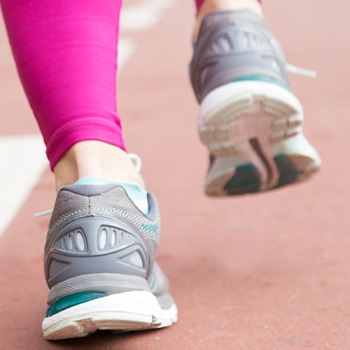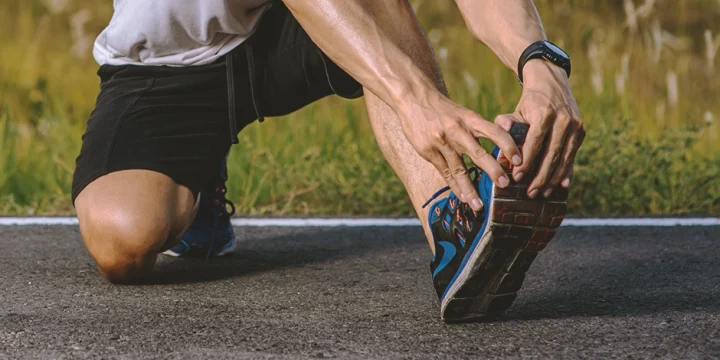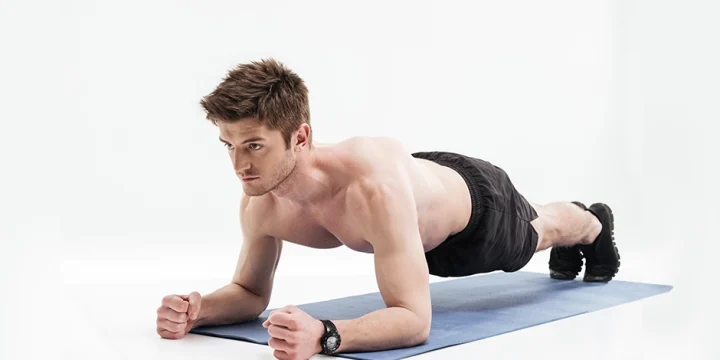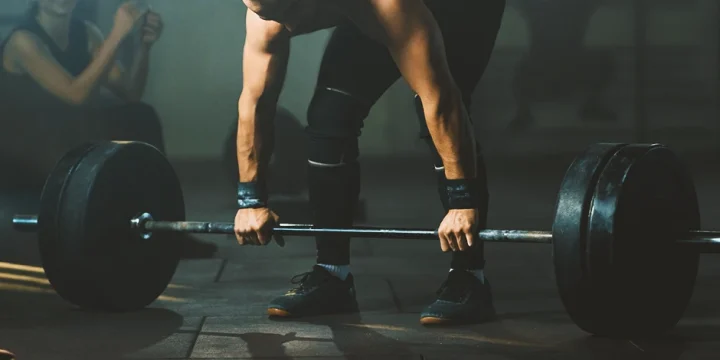Adding the fast feet exercise to your workout routine is an excellent and simple way to get your blood pumping, heart rate up, and fast-twitch action going in your muscles.
However, as a fitness coach for more than a decade, I have seen people get the technique and timing wrong, making this exercise less effective than it should be.
So, our team got together, and we tested some different techniques and timing options to gather relevant information for this post.
Here's how you should incorporate quick feet exercises into your workout plans.
Quick Summary
- To improve foot speed and agility, incorporate fast feet exercises, like lifting one foot at a time off the ground at high speed, into your workout routine.
- One significant benefit of fast feet exercises, is that they require no equipment and can be quickly grasped, making them ideal for engaging leg muscles and core.
- According to Health News, incorporating intervals of 30 seconds of quick feet followed by 20 seconds of slower-paced marching in place can effectively manage heart rate during fast feet exercises, allowing for sustained high-intensity training.
- In my opinion, fast feet variations such as "In And Outs" and "March In Place" provide enjoyable and effective ways to enhance foot speed and overall fitness without the need for complex equipment or drills.
How To Do Fast Feet Step By Step

I've seen many individuals underestimate the nuances of the quick feet exercise over the years.
Doing the quick feet exercise might look like a simple task, but I suggest you read these instructions carefully to get the most out of it:
- Get into an athletic stance with your knees slightly bent and feet shoulder-width apart.
- Keep your core tight throughout, and make sure you fully engage it before you start moving your feet.
- Get onto the balls of your feet, leaning slightly towards your toes.
- Now, lift up each foot at a time just a few inches off the ground while keeping your hips low and in position.
- As you raise each foot, bring up the opposite arm to get into the full motion that a sprinter would be in.
You want to keep this exercise going for as long as possible, and you'll intensify it if you stay low and lean forward slightly.
Incorporating the mental aspect of quick footwork is essential; concentration, reaction time, and agility are all vital components that can be enhanced through specific training strategies and drills.
Also Read: 5 Leg Press Foot Placement Positions
What Are The Benefits?

One of the standout advantages of the quick feet exercise, as I've personally witnessed, is that it requires no equipment, and you can grasp the technique fairly quickly. Not to mention, it's an excellent way to engage your leg muscles and core.
In comparison to jumping rope or doing burpees, this workout requires less skill and coordination. You'll get into the rhythm once you get your feet, legs, and arms coordinated.
Because you don't need any equipment, circuit training is a beneficial way make it an ideal way to get your muscles pumping for a warm-up or as a station.
The other major benefit is that it's a great way to work on fast-twitch fibers in your quad, hamstring, and calf muscles, according to the Health [1].
Athletes from diverse sports, such as soccer, basketball, and football, can all benefit from fast feet drills, with tailored routines designed to improve sport-specific agility and quickness.
"In the simplest terms, fast-twitch (type II) muscle fibers are built for short, powerful bursts of energy—that's in contrast to slow-twitch (type I) muscle fibers, which are built for endurance activities like long-distance running or biking."
- Mohamad Hassan, PT, DPT
Other types of exercises:
Variations And Alternatives

From my experience, I can vouch for the effectiveness of these two quick feet variations that I personally prefer, and they don't involve a jump rope or complicated ladder drills.
In And Outs
For this, you get into the same athletic position as with quick feet.
But instead of running on the spot, you step your feet out more than shoulder-width apart and then step back in.
And, of course, you do this as fast as possible.
March In Place
Here's a great tip I got from my college rowing coach. Start by doing quick feet for 30 seconds and then switch to 20 seconds of marching in place at a slower pace.
This will allow your heart rate to slow down a bit again, and then you can jump right back into quick feet for another 30 seconds, according to the Health News [2].
Related: How To Do Box Jumps Correctly
FAQs
What Does Fast Feet Exercise Do?
The fast feet exercise is a great way to work on speed and agility in the legs. This is particularly important for sprinters or athletes playing sports where sudden changes of direction are critical for successful competitiveness.
Does Fast Feet Make You Faster?
No, doing fast feet exercises alone will not make you faster. You will need to do a lot of other strength workouts to build up the right amount of muscle mass to give you explosive power in your legs.
To get more out of this workout, I’d advise you to add one of the pre-workout supplements we tested to your stack:
References:
- https://www.health.com/fitness/fast-twitch-muscle-fibers
- https://healthnews.com/health-conditions/cardiovascular-diseases/heart-rate-training-use-this-technique-to-improve-your-heart-health/
About The Author
You May Also Like






